The Predis AI free version applies watermarks to the project, whereas the cost of a paid subscription starts from $32/month, which is quite expensive for me. Besides, AI tools like ad generators are quite difficult to learn.
Initially, I felt that my posts lacked the brand voice, so they had to be revised. In addition, Predis AI has too many features and settings that are not easy to navigate. The UI is sometimes glitchy, which further complicates my workflow.
The new platforms have a better price-performance ratio and seamlessly integrate with Instagram and Facebook. They have intuitive UIs, so I did not have to spend much time learning them.
When selecting cheap or free alternative to Predis AI, I considered such aspects as user-friendliness, the variety of features, the quality of AI-created content, the range of tools it integrates with, tutorials on YouTube, and the pricing policy. The review describes free tools, or those priced starting at $5/mo.
I also focused on social media features, as they are very important in my workflow. I searched for tools that not only make content creation simpler, but also streamline scheduling, analytics, and engagement tracking.
★★★★★ (5/5) Multiple stock images
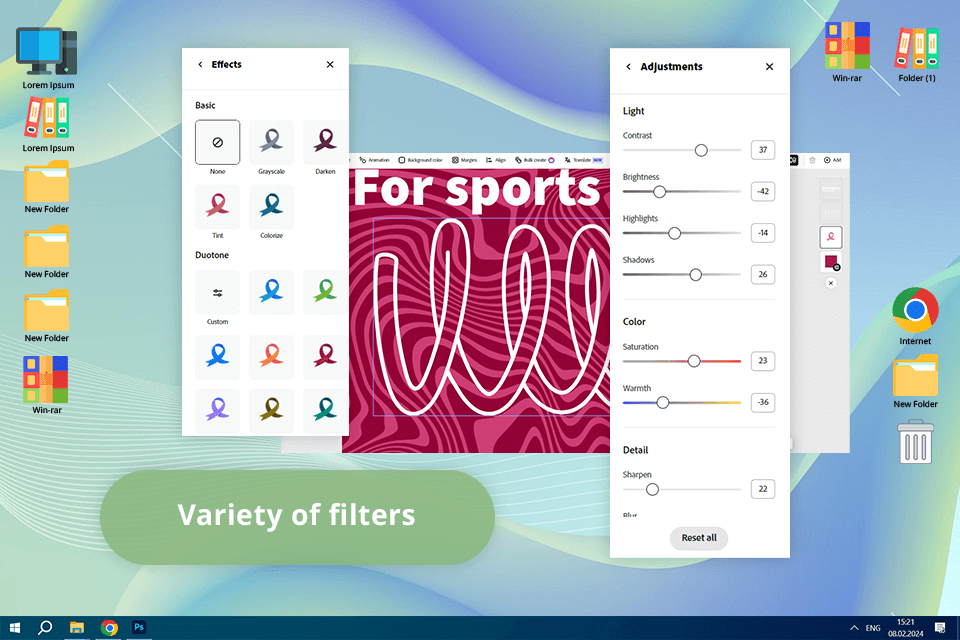
Price: Free (watermark premium content) or from $9.99/mo
Compatibility: Web, Windows, MacOS, Linux, iOS, Android
Design capabilities are what makes Adobe Express an excellent Predis AI alternative. It comes with a rich selection of templates, fonts, and Adobe stock pics, which are essential for creating social media posts, Reels, flyers, and even videos.
Adobe Express and Predis AI are both great options for social media scheduling that offer tools to plan publications on such platforms as Instagram and Facebook, thus becoming your one-in-all solution for managing content in a single place. Predis AI is speedier and performs all the tasks automatically. The platform uses AI-driven suggestions to generate posts.
The flexibility of Adobe Express templates is another considerable plus. They provide me with more freedom during the editing process, enabling me to perform more detailed tweaks. The brand kit feature is another aspect I appreciate, as thanks to it I can maintain consistent branding across various projects by saving my color palettes, logos, and fonts in a single place.
★★★★☆ (4.5/5) Speedy content creation
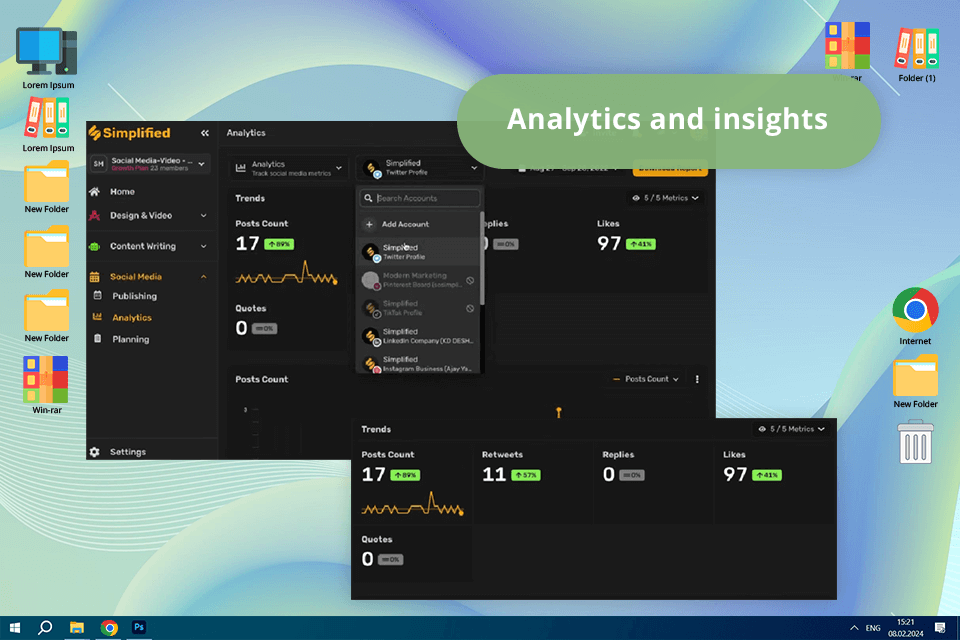
Price: Free (1 AI video) or from $24/mo.
Compatibility: Web, iOS, Android
Simplified is an all-encompassing tool that outperforms Predis AI with its versatility. Powered by GPT-3 model, Simplified can produce different types of content including blog posts, articles, landing pages, Facebook ad copies, etc.
Both Simplified and Predis AI have AI functionality to generate content. Simplified has a more extensive range of AI copywriting capabilities, but if you need to generate short-form content like captions and social media posts, Predis AI will cope with this task as well.
Using Simplified, it is easy to customize the projects by adding the brand’s logo, colors, and fonts to achieve a consistent look of all media assets. This AI tool for social media management is also great for engaging audiences by integrating interactive elements like quizzes, polls, and sliders.
With over 70 tools, Simplified is available in more than 25 languages. The AI writing assistant also provides multiple features like video and animation templates, a social media planner, and a no-code design editor. As for me, Simplified has a more comprehensive scheduling toolkit including a calendar view and more efficient tools for planning long-term content strategies.
★★★★☆ (4/5) Drag-and-drop editor
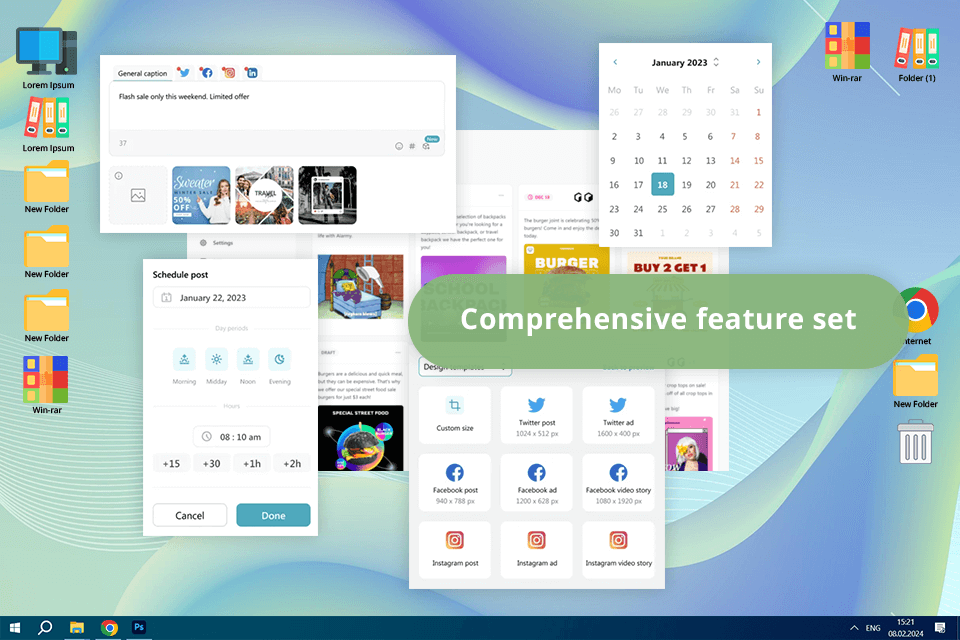
Price: From $15/mo.
Compatibility: Web
Ocaya is a great Predis AI alternative, which boasts a rich library of 10,000 customizable image and video templates to generate different types of content. The tool stands out with the quick hashtag suggestions, which simplifies the process of creating photography hashtags and optimizing content to appeal to a wider audience. Although Predis AI also assists with captions and content ideas, its focus on hashtag recommendations is not so strong.
Both Predis AI and Ocoya allow viewing different types of data like engagement, reach, and click-through rates to evaluate the performance of the campaign. Ocoya is also a better solution for generating video content, letting users personalize video templates with colors, fonts, and layouts right on the platform.
What I like about Ocaya is its ability to bulk schedule publications on various platforms and provide an all-in-one solution for managing all my dialogues in social media in a single inbox. While Predis AI also allows scheduling posts, Ocaya is much better at it.
★★★★☆ (4/5) Great scheduling features
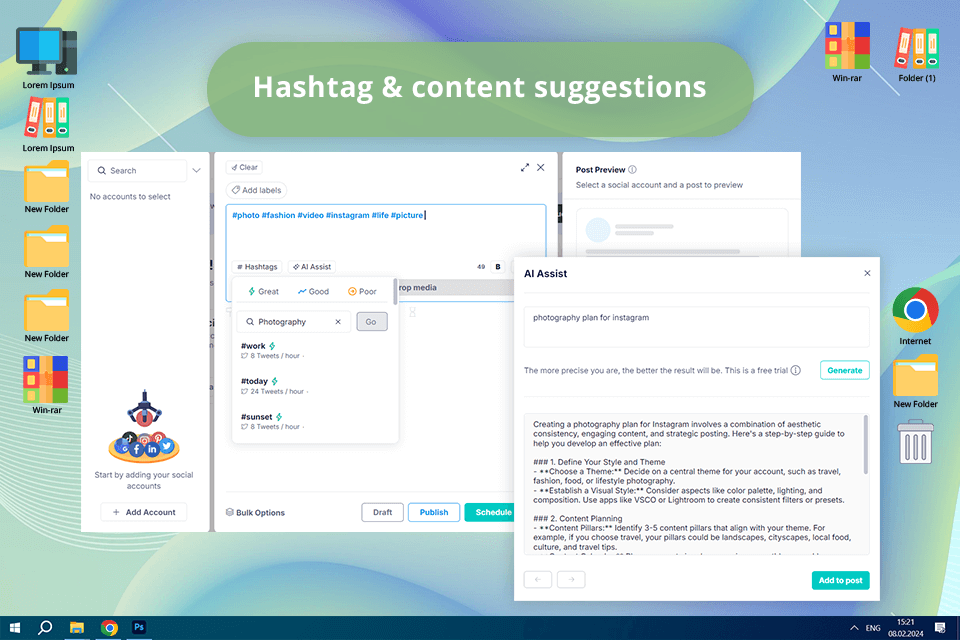
Price: Free (1 account) or from $9.59/mo.
Compatibility: Web, iOS, Android
Publer attracts users with its ability to schedule publications across different platforms with an excellent level of customization. The tool also offers more comprehensive analytics than Predis AI including engagement rates, click-through rates, and follower growth, across various platforms.
With Publer, I can define the exact time and day when a publication is to appear on a particular social media account. I also like that the tool offers the ability to reuse posts at intervals, eliminating the need to republish content each time.
Predis AI and Publer are great for scheduling publications across different social media pages, including Facebook, Instagram, LinkedIn, and Twitter. Both social media management tools come with handy team collaboration options for trouble-free role assignment, invitation of team members, and content approval before publishing.
Publer offers basic editing features for cropping, resizing, rotating, and flipping pics. Besides, thanks to the built-in button with a dedicated dashboard, I could create unique photo illustrations with Canva or produce marketing videos with VistaCreate on Publer.
★★★★☆ (4/5) Track engagement & interaction
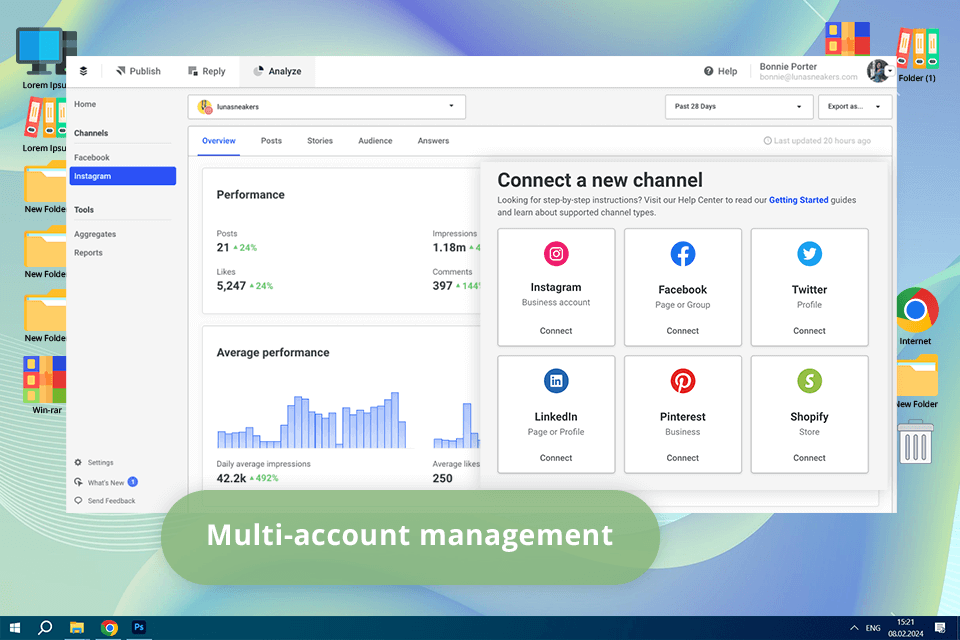
Price: Free (up to 3 channels) or from $5/mo.
Compatibility: Web, iOS, Android
Simplicity and ease of use are what makes Buffer excel Predis AI. The tool has a clean and intuitive UI so I had no trouble scheduling and posting across multiple platforms. Another advantage for me is a responsive Buffer mobile app for managing posts on the go.
Both Buffer and Predis AI are perfect options for planning content and managing social media. These Instagram marketing tools enable users to publish on different social media pages, schedule posts in advance, increasing the presence of their brand on the web. Predis AI has automated features for content creation. In contrast, Buffer is designed for managing and analyzing posts.
As Buffer integrates with Canva, Dropbox, OneDrive, and Google, it is super easy to import media. Thanks to its built-in analytics feature, I could learn the ideal time and platform to publish the content to appeal to and engage a wider audience. When I require assistance with content, Buffer's AI suggestions help me create content faster and more engaging.
★★★★☆ (4/5) A vast variety of ad formats
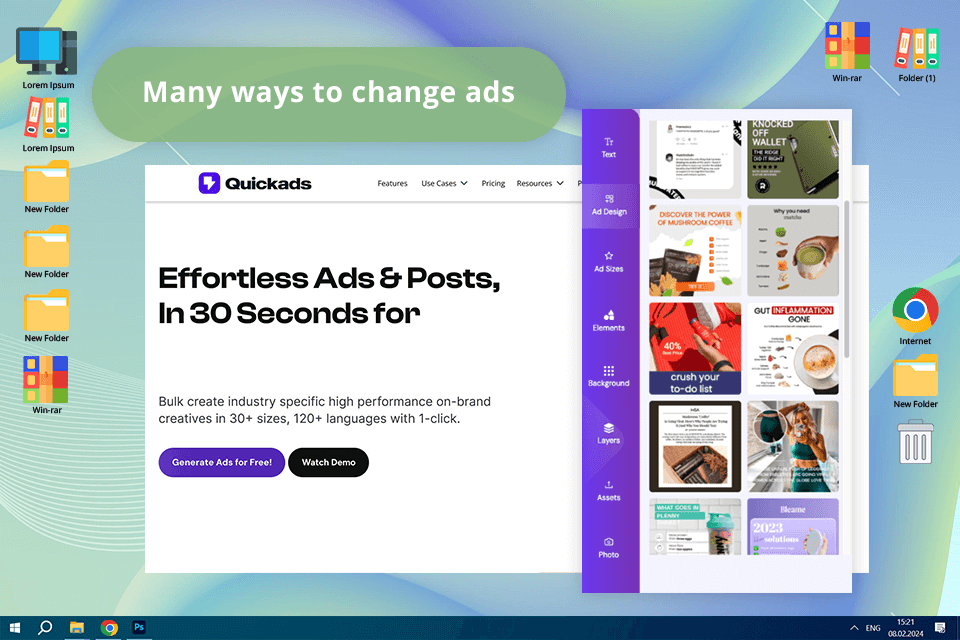
Price: 7 days free trial or from $29/mo.
Compatibility: Web
Quickads appeals to users with its speed and intuitive performance especially when it comes to creating ad campaigns across different platforms. While both tools leverage AI technology to generate content, Quickads is more oriented on ad generation, whereas Predis AI is better at producing creative social media publications. Both AI video generators have robust collaborative features.
I took advantage of Quickads when I needed to customize ads, as the tool offers a great collection of pre-made templates that speed things up. The platform supports over 35 languages like Hindi, German, Dutch, French, and more. In contrast, Predis AI offers more comprehensive analytics, which is essential for refining social media content.
★★★★☆ (4.5/5) Real-time hate speech filters
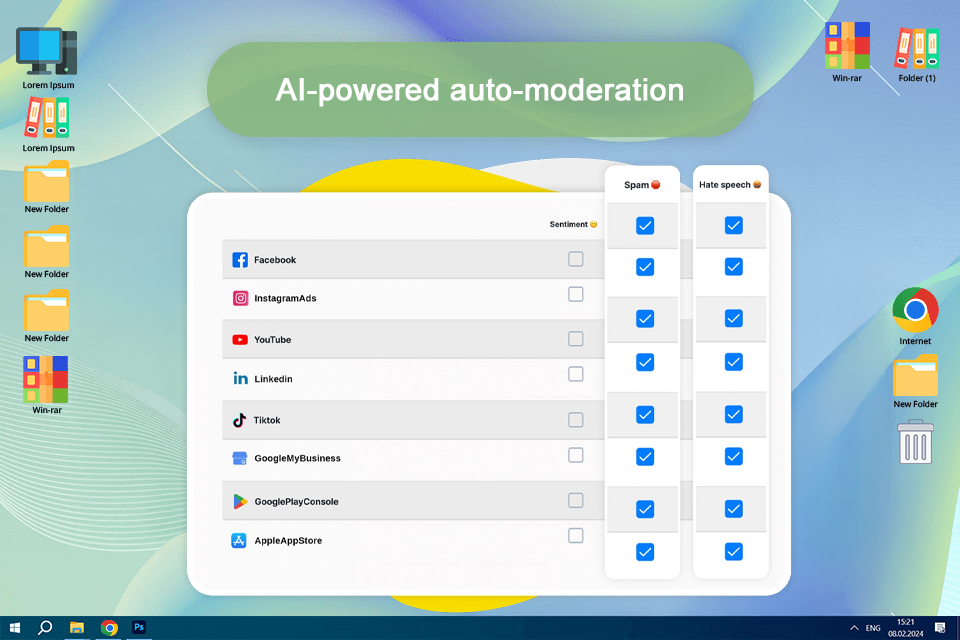
Price: Free trial (14 days), then from $27/mo.
Compatibility: Web, iOS, Android
I’ve been testing NapoleonCat assistant recently, and it turned out to be more useful than I expected. The way it automatically flagged spam and hate speech in both comments and private messages saved me from scrolling endlessly through irrelevant noise.
I also appreciated that the sentiment analysis provided me with an instant perspective on whether others were responding negatively or positively to something without my having to read every word personally.
For my needs, it is also an excellent Predis AI alternative thanks in part to the fact that moderation is paired with some content-creation aid within the same roof. I didn’t need to craft something too elaborate—the auto-moderation rules took care of keeping flagged comments out of sight while keeping me in control.
★★★★☆ (4/5) Post time optimization
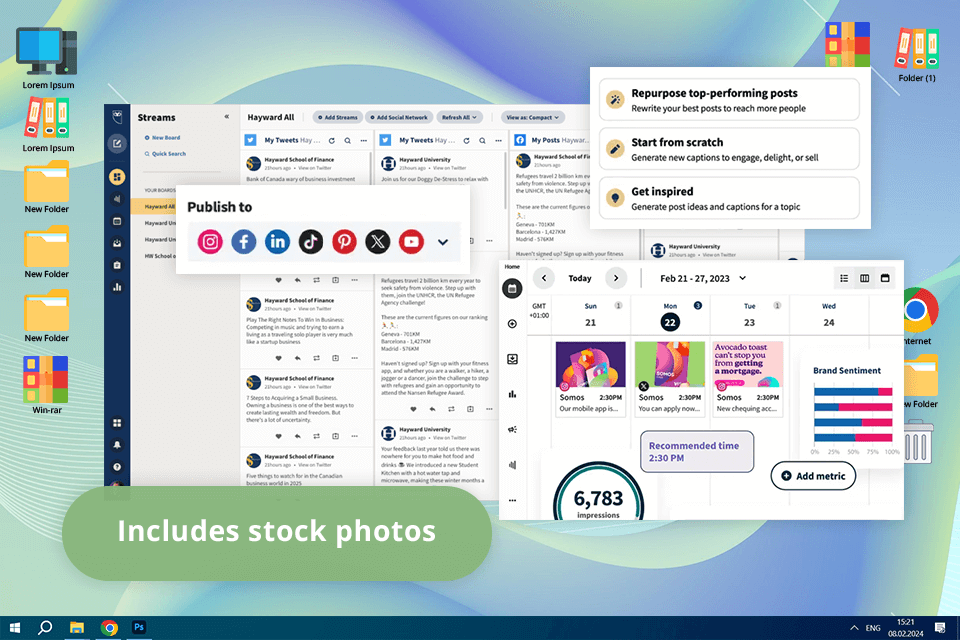
Price: 30-day free trial or from $99/mo.
Compatibility: Web, iOS, Android
Trying out both Hootsuite and Predis AI, I should claim that the first option provides more comprehensive functionality for managing social media. This all-in-one solution offers publishing, scheduling, analytics, social listening, and engagement tools. Unlike Predis AI, it even supports paid advertising management.
Both platforms use AI technology to generate content, but, to my mind, Hootsuite's Owly AI is more sophisticated. This content creation app generates captions, ideas, and hashtags that reflect the essence of my brand.
Besides, Hootsuite beats Predis AI with its ability to provide users with comprehensive data analytics, search content trends, and monitor hashtags.
★★★★☆ (4/5) Campaign tracking features
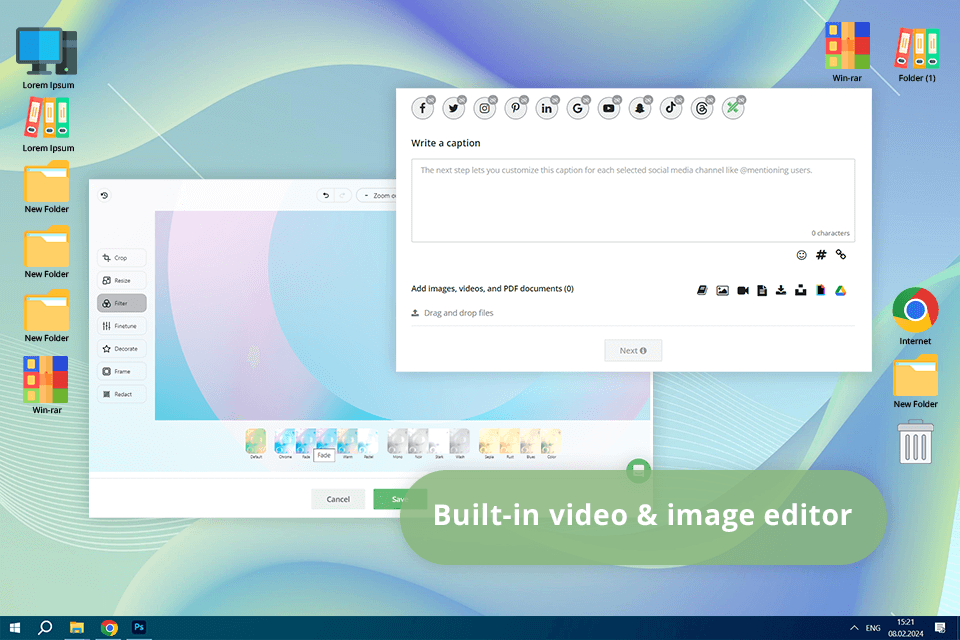
Price: 15-day free trial or from $32/mo.
Compatibility: Web, Android, iOS
Loomly differs from Predis AI mainly with its approach to content creation and automation. Predis AI is probably the best option for quick content generation with minimal input, whereas Loomly excels where detailed content planning and collaboration are required. Loomly is more team-focused and offers a structured calendar and approval workflows that are ideal for teams dealing with larger campaigns.
As both tools can schedule posts and provide detailed analytics, Loomly is more oriented on teams when it comes to organizing and managing social media efforts. Whereas Predis AI is a better solution for those who would like to automate their workflows. It is possible to track performance using both tools, but Loomly offers more detailed insights.
★★★★☆ (4/5) Creates videos in a flash
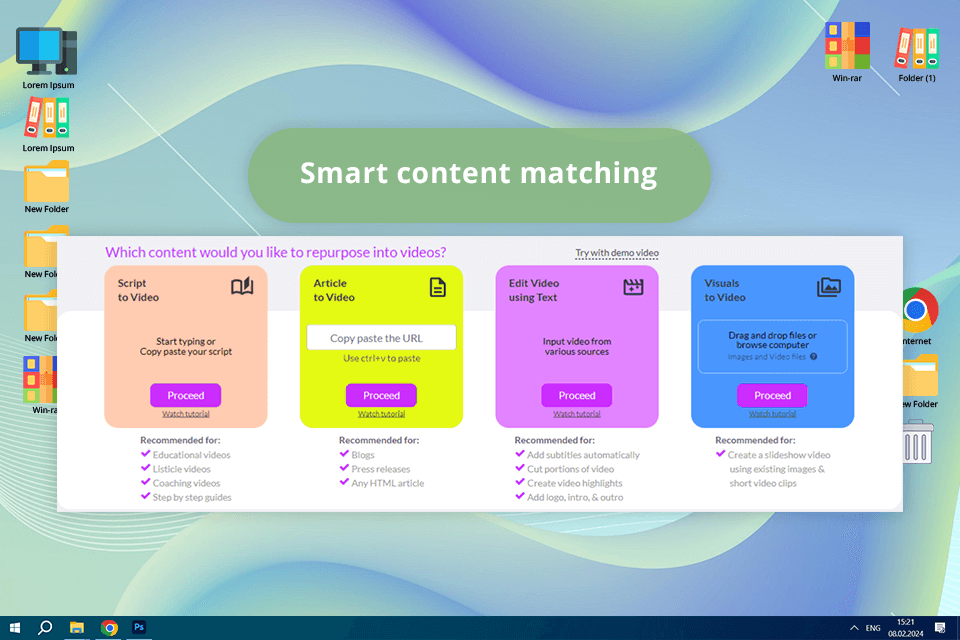
Price: 14-day free trial or from $19/mo.
Compatibility: Web
Pictory is a decent alternative to Predis AI designed to create videos, turning long video content into short clips for posting on social media or other web platforms. The task of Predis AI is to create social media posts, rather than durable or repurposed video content.
Pictory offers video templates for an ideal consistent look, whereas Predis AI attracts users with its variety of social media post templates. Offering AI-created voiceovers in different languages and accents, this AI video editor also generates automated captions to make videos accessible for people who prefer viewing content with the sound turned off.